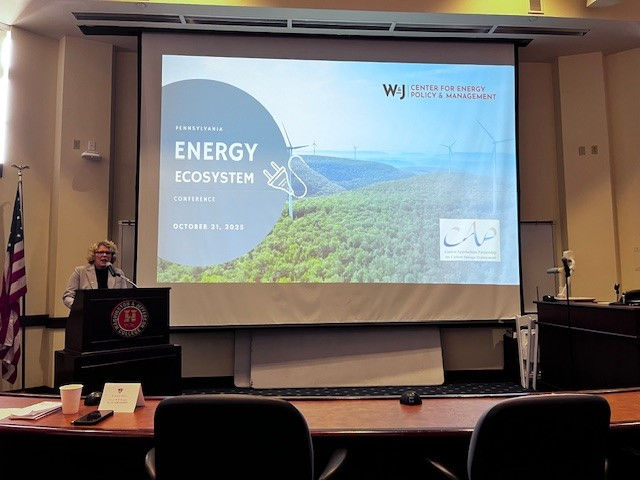“Harnessing Hydrogen” Symposium Focuses on Resolving Challenges
- Linda Ritzer
- Oct 6, 2022
- 2 min read
Hydrogen energy and carbon capture and sequestration (CCS) could play a big role in decarbonization and climate goals, speakers at the “Harnessing Hydrogen: Exploring Local and Regional Opportunities in Appalachia” symposium agreed, but developing a strategy to attract the technology to this region and overcoming regulatory hurdles must first be accomplished. The symposium, presented by Washington & Jefferson College Center for Energy Policy and Management, attracted almost 100 people to the campus for the day-long event that featured talks on hydrogen basics, carbon capture potential in Pennsylvania, the regional effort to attract a hydrogen hub to Appalachia, regulatory issues surrounding the technologies, and issues the state Legislature and local governments must recognize. Hydrogen is a clean fuel that when burned produces only water vapor, and it is seen as an energy source for decarbonizing heavy industry, such as steelmaking, and for long-distance truck and ship transportation. Hydrogen can be produced from natural gas using a process called electrolysis with renewable energy sources to make so-called “green hydrogen.” However, the technology must be scaled up rapidly and the cost must be greatly reduced. In the Appalachian region, the focus has been on “blue hydrogen,” which is produced from natural gas using steam reformation with the carbon emissions captured and pumped at high pressures into underground rock formations. This technology, too, must be rapidly developed in order to meet the 10-year funding window for $7 billion in federal start-up funds for the development of up to 10 hydrogen hubs around the country, with at least one expected to be in this region. Among the issues that must quickly be resolved are a state framework for regulating hydrogen and carbon sequestration, including ownership rights of the “pore space” underground where the carbon will be stored, a regulatory framework for operators and the state, and a determination of whether Pennsylvania will take “primacy” from the federal government in the permitting and regulation of injection wells that will be used for carbon storage. Both hydrogen and carbon sequestration will require pipeline networks and regulation of those must also be addressed. In addition, industries that want to decarbonize their operations must work in collaboration with government officials, scientists, affected communities, and economic development officials to spur private investment and take advantage of government incentives. Many of the speakers and attendees also noted that a large education effort is needed, as hydrogen and CCS are not well understood outside of the energy community. Local and regional government officials, as well as the public, need more knowledge in order to be prepared for the coming technologies. The CEPM will explore some of these issues in upcoming newsletters, on wjenergy.org, and future events on these subjects are being planned. Presentations from the “Harnessing Hydrogen” symposium are now available at wjenergy.org/hydrogen.



Comments